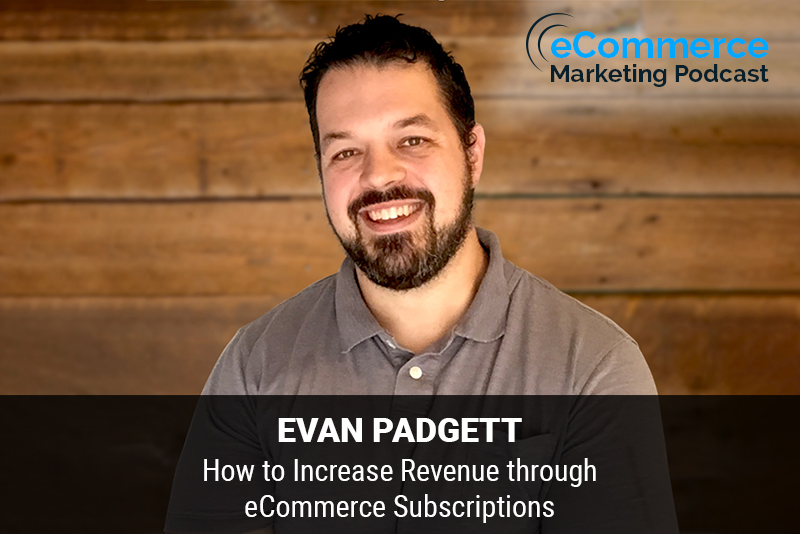
The eCommerce Marketing Podcast walks you through everything that goes into ecommerce marketing — from inbound marketing to paid advertising to conversions. Learn the strategies top marketing experts use to grow their businesses.
Today’s guest is Evan Padgett is an ecommerce and subscription commerce executive with 20 years of experience. As a COO of Stealth Venture Labs, an e-commerce marketing firm, he works with brands like Crocs, HelloFresh, Factor 75, and MUD\WTR.
In this episode, you will learn
- If subscription commerce is right for any DTC ecommerce business
- The downsides to setting up a subscription commerce offering
- The things that need to be in place for a brand to effectively have a subscription commerce offering
- Examples of some ecommerce businesses that have a successful subscription commerce offerings
For show transcript and past guests, please visit https://www.ecommercemarketingpodcast.com
Or on YouTube at:
https://www.youtube.com/channel/UC3PgT0NOGzpdPGQtBK0XLIQ
Follow Arlen:
Twitter: https://twitter.com/askarlen
Facebook: https://www.facebook.com/arlen.robinson.7
Instagram: https://www.instagram.com/arlenyohance/
LinkedIn: https://www.linkedin.com/in/arlenrobinson/
Past guests on the ecommerce marketing podcast include Neil Patel, Nemo Chu, Luke Lintz, Luke Carthy, Amber Armstrong, Kris Ruby and many more.
Thanks for listening. Be sure to subscribe and leave a review.

In this episode of the eCommerce Marketing Podcast, host Arlen Robinson interviews Evan Padgett, COO of Stealth Venture Labs. Evan shares his extensive experience in ecommerce and subscription commerce, discussing how businesses can effectively implement and manage subscription models. He provides valuable insights into the benefits, challenges, and technical requirements of subscription commerce, offering practical advice for businesses considering this approach.
Key Takeaways:
- Introduction to Evan Padgett (00:00:57)
- Evan’s background and experience in ecommerce and subscription commerce with brands like Crocs, HelloFresh, and MUD\WTR.
- Understanding Subscription Commerce (00:04:32)
- Explanation of subscription commerce and its benefits for direct-to-consumer ecommerce businesses.
- Planning and Preparation (00:09:13)
- The importance of thorough preparation and planning before launching a subscription model to avoid potential pitfalls.
- Technical Requirements (00:16:50)
- Essential technical components needed for implementing a subscription commerce model, including platforms and tools like Shopify, Recharge, Bold, and Chargebee.
- Effective Customer Engagement (00:19:05)
- The significance of customer relationship management and creating engaging email and SMS campaigns for onboarding and retaining subscribers.
- Challenges of Subscription Commerce (00:09:13)
- Potential downsides and challenges, including managing cash flow, inventory, and maintaining product quality.
- Keys to Success (00:24:13)
- Criteria for a successful subscription business, including having a passionate and large audience, unique value proposition, compelling unit economics, and solving a customer pain point.
- Examples of Successful Subscription Models (00:28:25)
- Examples of companies with successful subscription models and the characteristics that make them successful.
Bullet Points of Key Takeaways with Timestamps:
- [00:00:57] Introduction to Evan Padgett and his experience.
- [00:04:32] What is subscription commerce and its benefits.
- [00:09:13] The importance of planning and potential downsides.
- [00:16:50] Technical requirements for subscription commerce.
- [00:19:05] Effective customer engagement strategies.
- [00:24:13] Criteria for a successful subscription business.
- [00:28:25] Examples of successful subscription models.
Guest Information:
Evan Padgett
- COO of Stealth Venture Labs
- Email: [email protected]
- Website: StealthVentureLabs.com
- LinkedIn: Evan Padgett on LinkedIn











